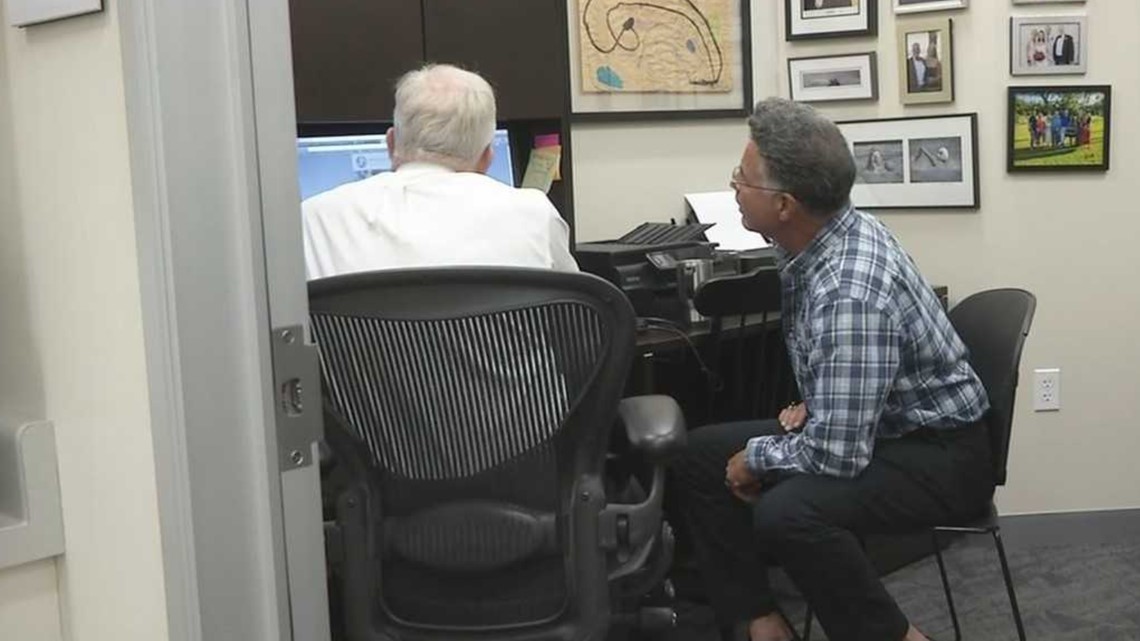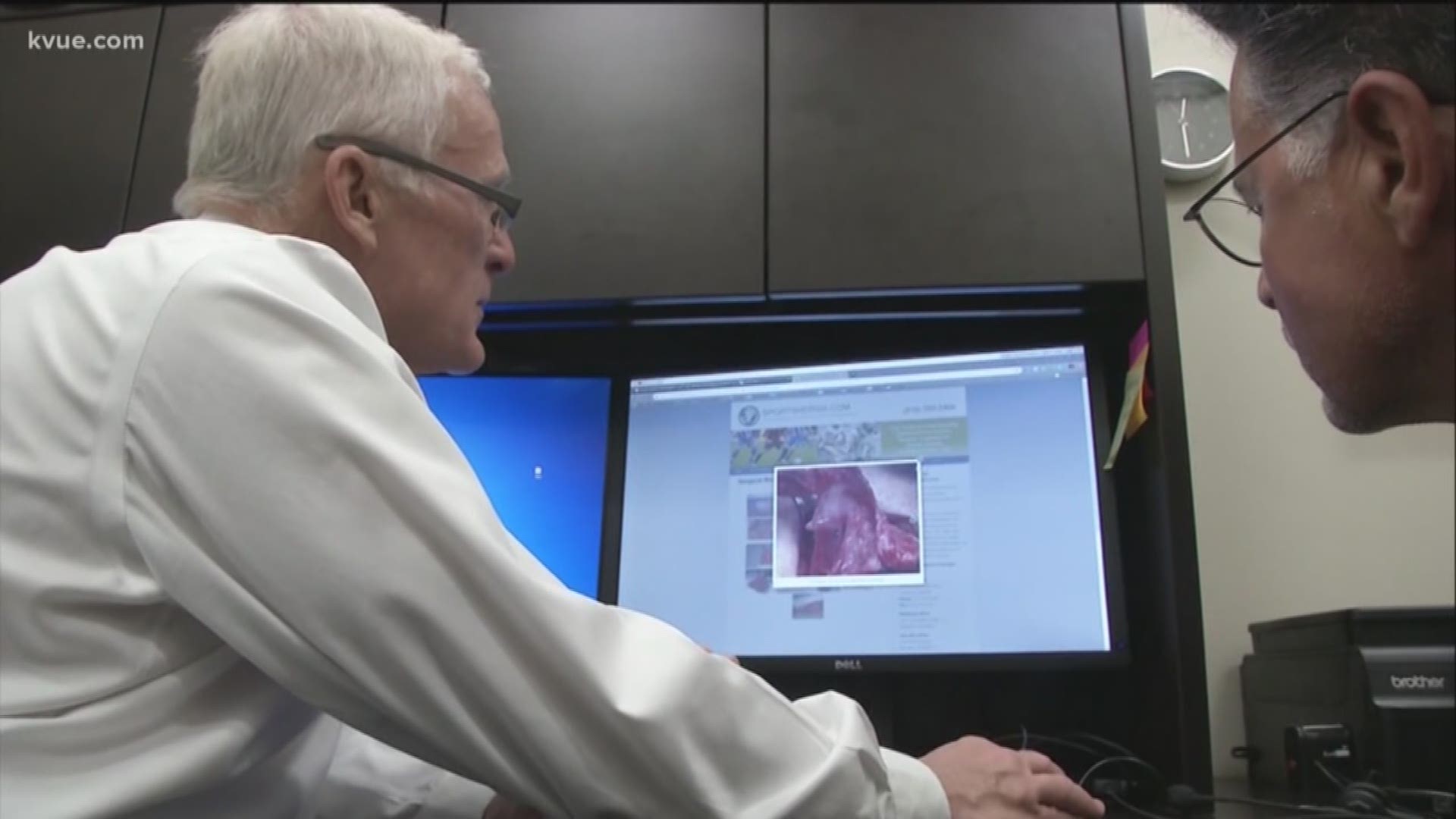GEORGETOWN, Texas — Moving is never easy. It's even harder when you're recovering from your ninth surgery.
“I wish somebody had told me don't do it, don't do it,” said Carmen Pacheco.
Pacheco endured years of pain following what should have been a simple hernia repair. It was a surgery that has cost her more than her health.
“It's put a strain on our marriage, we lost our house,” she said. “We have to move it's so expensive. I can't work. We have to get a cheaper, a smaller house.”
Dominick Drisdon, 59, never fully recovered from the hernia surgery he had in 2006.
“It was tough. I thought this was it. I'm just going to have to live with this for the rest of my life,” said Drisdon, who hurt his hernia working as a garbage delivery man. “A few months later as I was getting better, I noticed I couldn't get up out of bed. It was like a very sharp, burning pain like someone was stabbing me with a knife and that went on for years.”


Both Drisdon and Pacheco had hernia repair surgery using mesh. The plastic material, which looks like a window screen, has been used since the 1980s.
It has become increasingly common in recent years because it seemed to last longer, took less time and was inexpensive to produce.
“It was pushed very hard by all the manufacturers because the profits are so high. A piece of mesh would cost maybe a dollar to make and they would charge thousands of dollars to do this,” said California surgeon Dr. William Brown.
This doctor no longer uses mesh
Brown has performed thousands of hernia surgeries – but no longer uses mesh. Instead, he uses pure tissue repair.
“The operation takes a little bit longer than the mesh and it’s a little more complicated because you need to know all the muscle layers,” he said.
Dr. Brown said mesh hernia repair surgery can be done in about 15 to 20 minutes. Pure tissue repair can take an hour or more. He said most patients are not told there is an option to do pure tissue repair or even told the risks of putting in mesh.
“Most surgeons do not discuss the problems with mesh because they consider it the standard of care. They don’t even bring it up, so most people go into the surgery not even knowing there is an option not to have mesh put in. I advise all patients not to have mesh put in," he said. "There are so many complications from the mesh. It is very hard to predict who's going to have the complications. If you have a complication from the mesh it’s a nightmare to get it back out because all these sensitive structures are stuck to the mesh.
"A vast majority of surgeons are doing pure mesh repairs," said Dr. Brown. "Part of that is the companies that make the mesh keep having all these conferences – they put together all these papers. You can find all these papers that say the recurrence rate with mesh is much less and many of these are sponsored by the mesh companies. If you look at the authors, they are getting paid by the manufacturers.”
Dr. Brown cited studies that show the recurrence rate with mesh is about 3%. That is the rate for the number of people who will have to undergo another surgery following their initial repair. The recurrence rate with natural tissue repair is about 4%, he said.
“Patients who have mesh have about a 15% chance of having pain. One to two percent of people have enough pain that they eventually have to have the mesh removed,” he said.
Dr. Brown said he has given many second opinions to patients who were told they needed mesh. He reached out to one of those surgeons recently about doing a pure tissue repair instead.
“He came back and told me he did not do any of those operations during his residency and was not comfortable doing it that way and so all he could offer his patients was mesh repair,” he said.
“After about a year of using the mesh, patients started coming back with chronic pain, stiffness and other problems. I ended up having to remove mesh from the very patients I was putting it into,” he said.
Dr. Brown is one of the few surgeons in the country that only performs pure tissue repair.
“I came to the conclusion that this was stupid," he said. "Why would I go from something that was working perfectly well to something that had all these complications to it? So I went back very quickly to doing pure tissue repair for hernias and I've been doing that ever since.”
“Mesh is such a problem for patients and, if they listen to their patients afterward, they should learn very quickly that it’s a real problem and you can devastate a patient with chronic pain," he said. "You take a simple operation and just ruin someone’s life. Anyone who’d like some training to try to do it the old fashioned way I’d be happy to work with them to do it the right way.”
Patients such as Drisdon seek him out to remove what other doctors put in.
“A few weeks later, I was able to actually sit up out of bed. No pain whatsoever,” said Drisdon.
Mesh removal surgeries are complicated and time-consuming. However, Dr. Brown sees it as his mission to help people like Drisdon.
“Especially since the surgeons that put the mesh in won’t take it back out," said Dr. Brown. "They often will say, ‘This is just what you have to deal with.’ I feel like if I’m the one that put something in and it causes a problem, I should be the one to take it out, but most surgeons won’t do that for the patient. So they’re left in limbo unless they can find someone like me to take the mesh back out for them.”
Recovery slow for Georgetown woman after hernia mesh removal
Pacheco recently had her mesh removed by a doctor in Maryland, but after a decade of suffering, her recovery has been slow.
“He did a total reconstruction of my abdomen. I used to weigh 225 pounds. [Now] I weigh 125 pounds,” she said.
Her family suffers too. A pile of medical bills forces them to try to find a cheaper place to live.
“I feel a little bit better, but my life has changed completely. I'm never going to be the same, never,” she said.
Dr. Brown hopes that more exposure will lead to change.
“I'm hoping your interview here and your pushing more information out there will help the government see that this is a major problem and hopefully get legislation together to help protect the patients,” said Dr. Brown.
If you have had experiences with medical device dangers, we encourage you to join the Medical Device Dangers Facebook group.
PEOPLE ARE ALSO READING:

